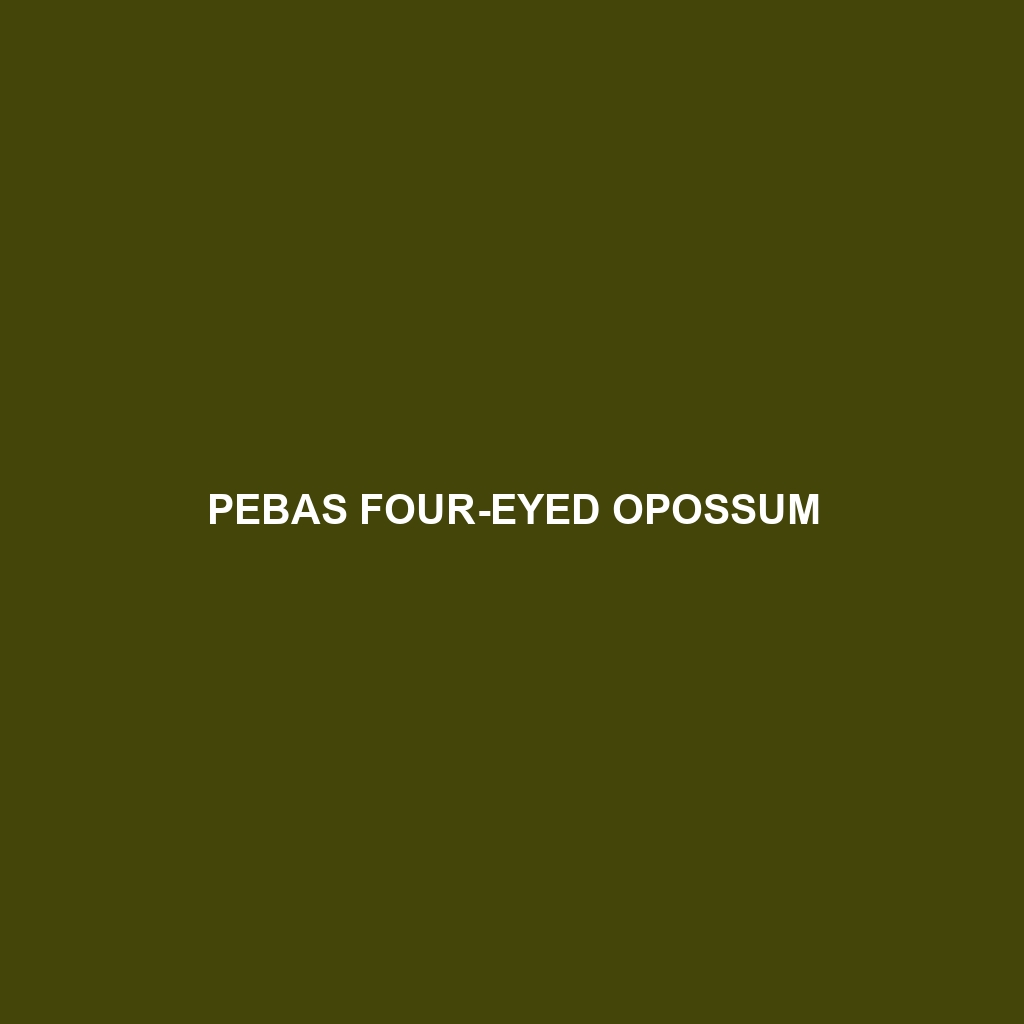Pebas Four-eyed Opossum (Philander pebas)
The Pebas Four-eyed Opossum, scientifically known as *Philander pebas*, is a remarkable marsupial found predominantly in the Amazon Basin. This unique species is distinguished by the distinctive white spots above its eyes, which give the illusion of having four eyes—hence its name. Known for its elusive nature and adaptability, the Pebas Four-eyed Opossum plays a crucial role in the ecosystem.
Physical Characteristics:
Size: The Pebas Four-eyed Opossum is a mid-sized marsupial, with adults typically measuring around 30 to 40 centimeters (12 to 16 inches) in body length. The tail adds another 25 to 35 centimeters (10 to 14 inches), making it quite long and prehensile.
Coloration: This opossum exhibits a predominantly grayish to brown fur, which provides effective camouflage in the dense forest undergrowth. The most striking feature is the pair of white spots situated above each eye, creating the illusion of additional eyes.
Special Features: Apart from the four-eyed appearance, they have a prehensile tail, which aids in climbing and navigating through the dense vegetation of their habitat. They also possess a pouch, like all marsupials, where the young are carried and nurtured.
Behaviors:
Social Interactions: Pebas Four-eyed Opossums are generally solitary animals, coming together only during the breeding season. They are nocturnal, spending the day in nests made of leaves and twigs in tree hollows or crevices.
Feeding Habits: They are omnivorous, with a diet that includes fruits, insects, small vertebrates, and occasionally carrion. Their foraging behavior helps in seed dispersal, thereby contributing to forest regeneration.
Ecological Roles: This species plays a vital role in controlling insect populations and dispersing seeds, making them important contributors to the health and sustainability of their ecosystem.
Habitats:
Geographical Range: The Pebas Four-eyed Opossum is primarily found in the Amazon Basin, including regions of Brazil, Peru, and Colombia.
Preferred Habitats: They thrive in tropical rainforests, where they can find ample food and shelter. They are highly adaptable and can also be found in secondary forests and areas disturbed by human activities, provided there is sufficient cover.
Adaptations:
Camouflage: Their coloration helps them blend into their surroundings, aiding in evasion from predators.
Nocturnal Lifestyle: Being nocturnal reduces the risk of predation and allows them to exploit food resources that are less competitive at night.
Prehensile Tail: This adaptation allows them to adeptly navigate the forest canopy, providing access to food and safe nesting sites.
Conservation Status:
The conservation status of the Pebas Four-eyed Opossum is currently not well-documented, largely due to their elusive nature and the vast, dense habitats they occupy. However, deforestation and habitat fragmentation in the Amazon Basin pose potential threats to their population.
Fascinating Fun Facts:
The white spots above their eyes are thought to be a form of mimicry, possibly deterring predators by giving the impression of a larger animal with more eyes.
The prehensile tail is not just for climbing; it can also be used to carry nesting materials as they move about the forest.
Unlike many other marsupials, the Pebas Four-eyed Opossum does not undergo long periods of torpor, remaining active year-round to take advantage of the abundant food supply in the rainforest.
Whether you’re a wildlife enthusiast or a curious learner, the Pebas Four-eyed Opossum is a fascinating creature that highlights the incredible biodiversity of the Amazon rainforest.
